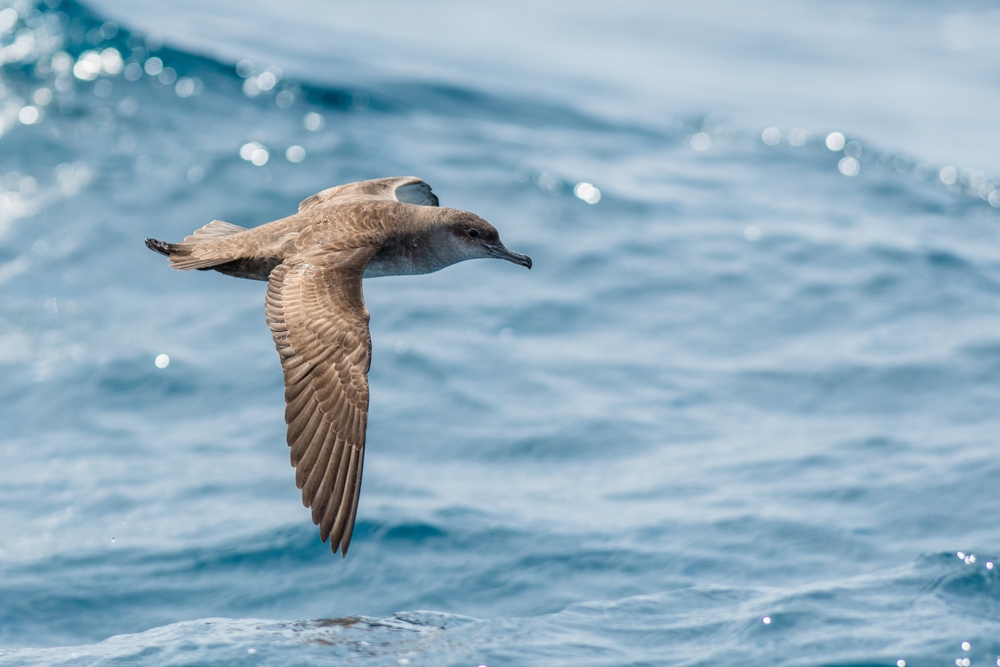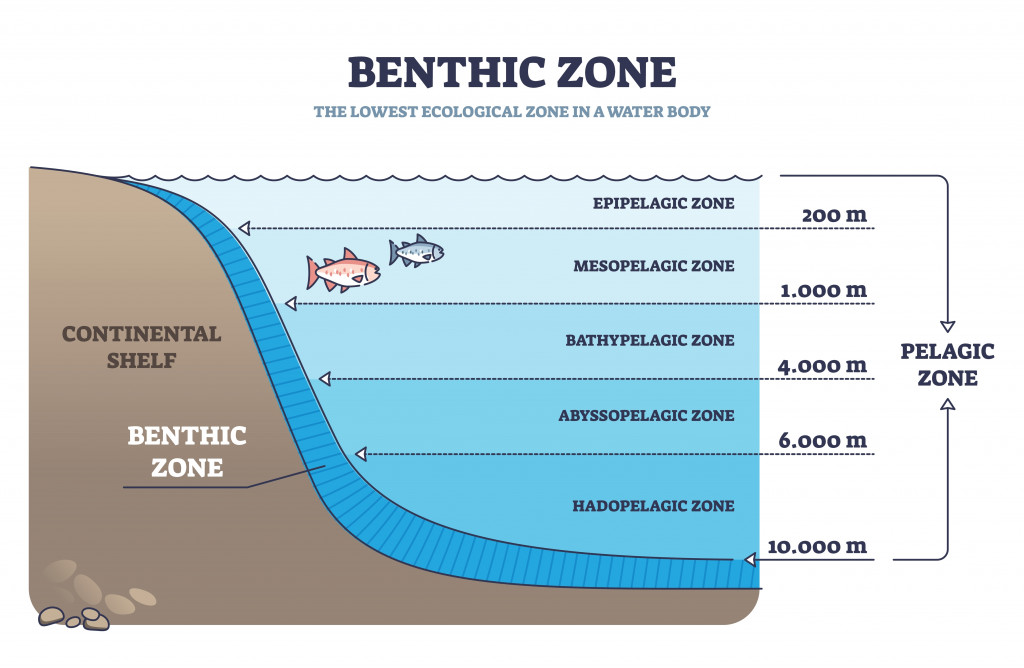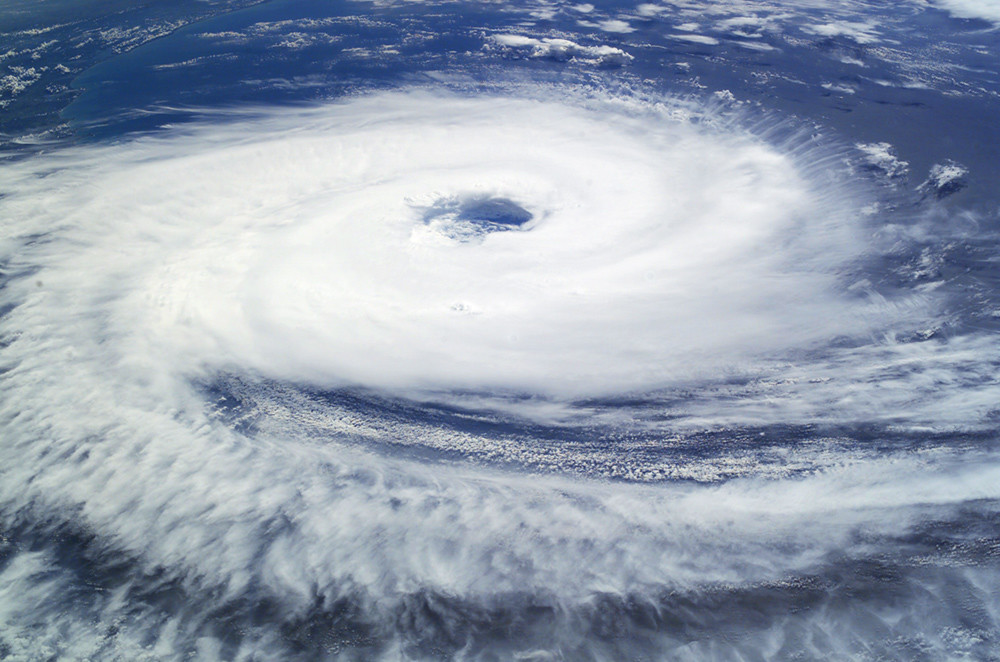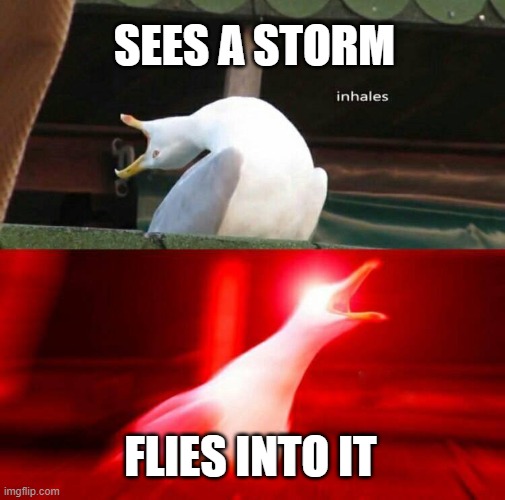Table of Contents (click to expand)
Researchers from Leeds University, Swansea University, and Nagayo University found that the shearwaters, a species of seabird, fly into the eye of the storm, as opposed to flying away from it. Interestingly, the birds flew into the storm when the storm had higher speeds, while usually flying away from slower storms.
Imagine yourself as a Japanese farmer. The government has sent you a warning of an approaching typhoon. As you run to take shelter, you notice the oddest thing out at sea; you see a few sea birds flying straight into the storm. Sounds baffling, but it actually does happen and this article will explain exactly why!
Scientists from the UK and Japan certainly felt baffled when they studied these birds and this odd behavior. Researchers from Leeds University, Swansea University and Nagayo University set out and tagged Shearwaters, a species of pelagic seabirds that live in Japan. But what exactly are pelagic seabirds?

Pelagic Seabirds
When talking about biology, pelagic refers to a region of the ocean known as the “open ocean”. Normally, pelagic only refers to the water column away from the shore (beyond coastal waters), but in this special case, it also refers to animals, such as birds, that depend on these waters for food.

Pelagic seabirds have many characteristics; they take much longer to mature, and reproduce at lower rates. However, to counter that, they also have a longer lifespan than most birds (shearwaters can live up to 40 years). These are all characteristics that evolved because pelagic seabirds spend the majority of their lives at sea. Research shows that shearwaters can spend up to 15 days at a time at sea!
But the ocean is not free of its own perils and difficulties. There are many large predators, tough conditions and the worst of all, frequent storms!
How Bad Are These Storms?
These are not just regular downpours. There is no sitting by your window with a hot cup of coffee or tea as you look wistfully out the window. The storms I’m talking about are full-scale hurricanes (or typhoons or cyclones. the terminology differs for the same thing). These storms cause billions of dollars worth of damage and thousands of people to lose their lives every year.
The interesting thing about a cyclone is its structure. The wind at the edges is relatively slower, but as you go towards the middle, the wind speeds increase drastically. Then, the oddest thing occurs, right in the middle of the storm, the winds become incredibly calm. This calm region is called the eye of the storm.

Hurricanes are formed over hot water regions near the equator. You can read about the science behind their formation in an article here. These storms are extremely destructive and can have winds ranging from 119 km per hour (74 miles per hour) up to 252 km per hour (155 miles per hour).
These winds are extremely dangerous to birds. A bird that lives near land would seek shelter, but for a seabird, it’s a completely different story. What if the bird is far out at sea when the storm occurs?
Also Read: What Causes A Hurricane?
Surviving The Storm
There are many ways for pelagic seabirds to survive the storm. The easiest is quite obvious—they avoid the storm, sometimes deviating from their regular path by as much as 600 kms (approximately 373 miles).
Shearwaters, on the other hand, are quite the daredevils. If the winds were weaker in strength, the birds will simply fly away, but if the winds are very strong, the birds do the most bizarre thing. They fly right towards the eye of the storm.

Upon further analysis of the data, it was found that the birds would fly into these storms if it was close to their feeding grounds. Initially, the scientists believed that maybe the birds were using these strong winds to fly. These birds have large wings and could use the strong winds to help them glide without flapping their wings, which would save them energy.
However, this still didn’t fully explain their behavior. What confused scientists was that the birds only flew into the storms if the storms would carry them away from land. If they flew into storms that carried them towards land, there was the possibility of crashing into standing structures and getting injured or dying. But out at sea, there is nothing to crash into, making it ultimately safer for them.
Also Read: How Do We Track The Movement Of Birds All Over The Globe?
Conclusion
When looking at the data, we find that young shearwaters are more vulnerable to these storms and are often injured or killed by them. This shows that this behavior attempting to deal with storms and certain decisions to increase their safety are learned during their lifetime
There is still a lot more that scientists must learn about these birds and their peculiar behavior. We have only scratched the surface of their behavior, but hopefully, with time and more data, we can learn more about how these birds react to these destructive storms.
Understanding these birds’ behavior could even help us when it comes to predicting storms and taking the necessary precautions to protect human life!
Also Read: Can Birds Fake Injury To Ward Off Predators?
How well do you understand the article above!

References (click to expand)
- Lempidakis, E., Shepard, E. L. C., Ross, A. N., Matsumoto, S., Koyama, S., Takeuchi, I., & Yoda, K. (2022, October 4). Pelagic seabirds reduce risk by flying into the eye of the storm. Proceedings of the National Academy of Sciences. Proceedings of the National Academy of Sciences.
- How do Hurricanes Form? - cybercemetery.unt.edu
- NWS JetStream - Tropical Cyclone Structure. The National Weather Service
- Bennet, D. G., Horton, T. W., Goldstien, S. J., Rowe, L., & Briskie, J. V. (2019, June 28). Flying south: Foraging locations of the Hutton's shearwater ( Puffinus huttoni ) revealed by Time‐Depth Recorders and GPS tracking. Ecology and Evolution. Wiley.
- Ricklefs, R. E. (1990). Seabird Life Histories and the Marine Environment: Some Speculations. Colonial Waterbirds. JSTOR.
